NatureZen: Birds with Snacks
words and photos by Melissa McMasters
It’s the holiday season, and we’ve got snacks on the brain. Holiday parties, big family meals, stockings stuffed with candy in sparkly wrappers…we’re being bombarded with seasonal treats right now. But for birds in our area, winter is hardly the season of abundant food sources. With most plants dormant for the winter and temperatures often too cold for insects to fly, the birds’ diets have to adapt. Many birds, like the colorful warblers we see in spring and fall or the ruby-throated hummingbird, head all the way down to Central America, where there are plenty of insects and nectar sources. But what about the birds who spend their winters in Tennessee with us?
If you’ve got a bird feeder, you may recognize the Northern cardinal as a seed-eater (with a particular taste for black oil sunflower seeds). This makes it well-suited to a Tennessee winter. One of my favorite small joys of a December walk through the Old Forest is feeling a soft rain of tulip poplar seed husks, looking up, and spotting a cardinal with its head buried in what used to be a pale-green and orange bloom. In warmer seasons, it’s also a treat to spot a cardinal with a mouthful of caterpillar, which is probably en route to a nestling waiting for an easy-to-chew meal.
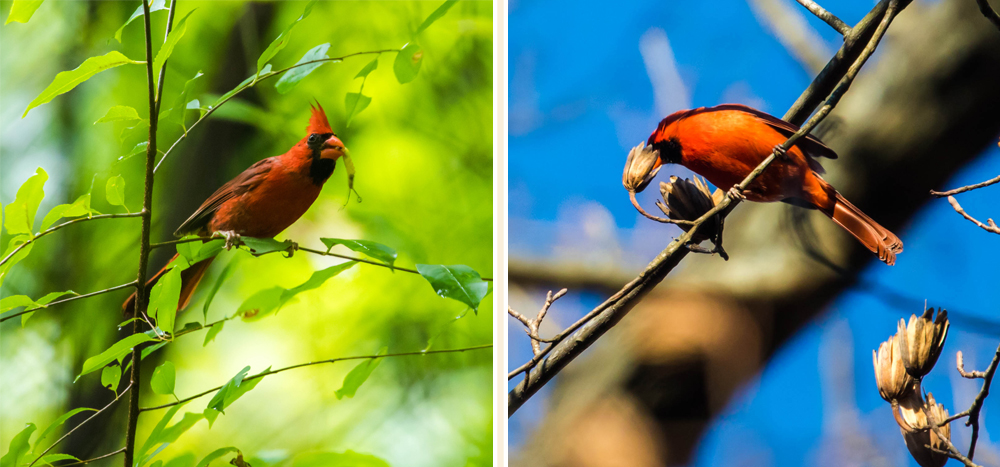
Dark-eyed juncos get about 75% of their diet from seeds year-round, so winter doesn’t require as much of an adjustment. These birds don’t spend summers in our area, so you’re unlikely to see one with an insect in its mouth around here (the below left photo is from a June visit to Maine). Right now, though, is a great time to watch the ground or the side of a trail where grasses and other low-growing plants have been left to go to seed.
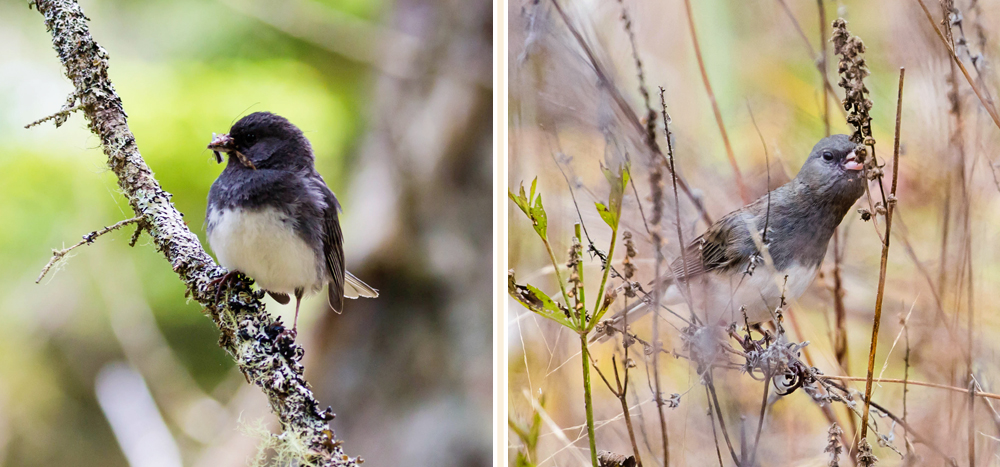
If there’s one bird I’m constantly seeing with a snack in tow, it’s the tufted titmouse. This is at least partially because this bird tends to choose the largest seed it can find, fly to a perch, and beat the living daylights out of that seed with its bill. That this burst of violence often starts with the seed tucked daintily between two little bird feet just adds to the spectacle. Below are titmice pictured with their winter seeds-and-nuts diet (including our friend from the Rainbow Lake Playground parking lot who spends a lot of time admiring himself in car mirrors), as well as one who seems to have caught a moth almost its own size and wound it around its bill.
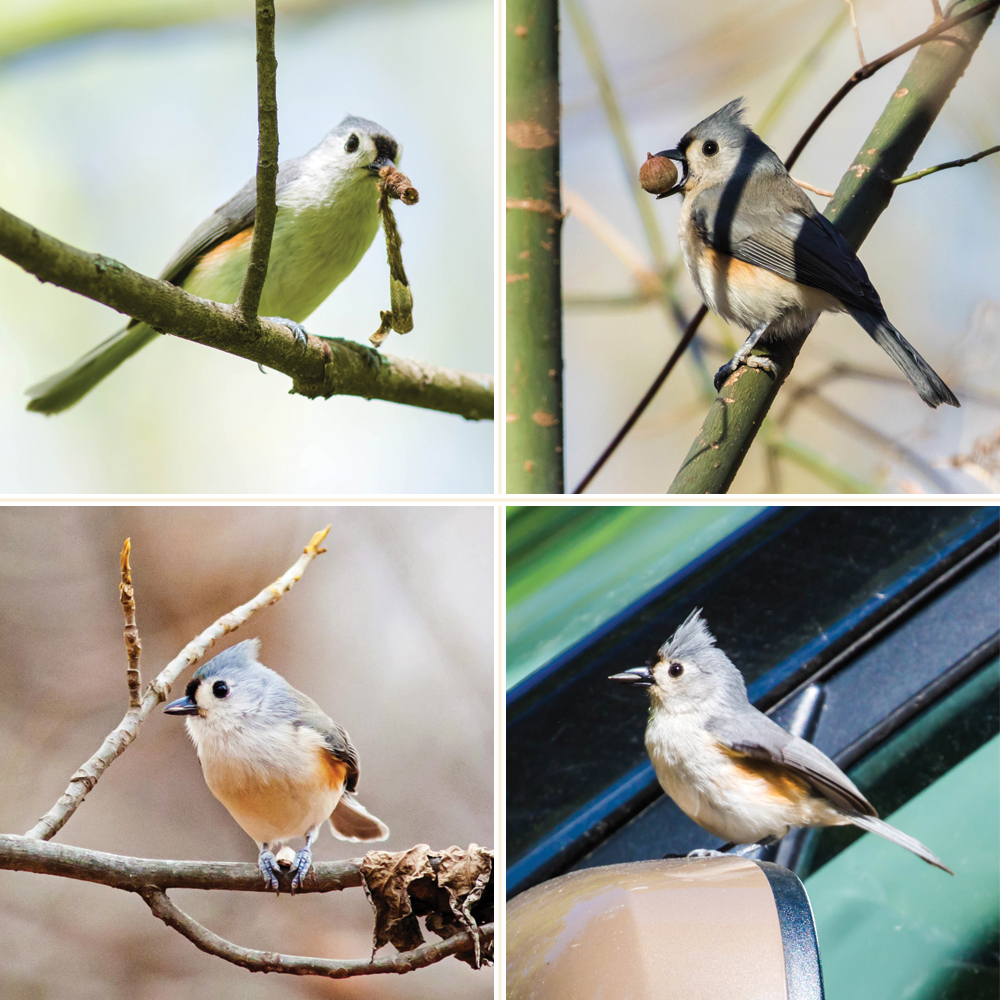
One of the tiniest birds in our forest, the ruby-crowned kinglet seems to never stop moving. It flits from branch to branch, kicking up small insects to eat. But in the winter, it resorts to seeds and berries, including from a plant we think of as 100% nuisance. A couple of weeks ago, I watched this bird plucking the dried berries off a poison ivy vine on a cold afternoon. I’m glad someone has a use for it!
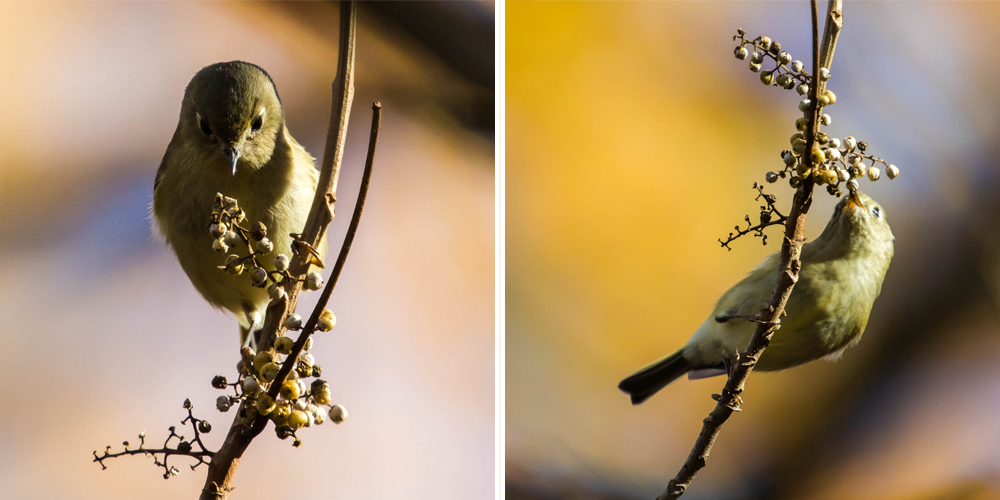
Unlike most of the previous birds, the cedar waxwing eats mainly fruit all year long. If you have native fruit-bearing plants like hawthorn trees or serviceberry bushes in your yard, you may attract a flock (these birds are almost always seen in large groups). I enjoy watching them choose berries that look slightly overripe, pluck them from a tree, and flip them up to catch and swallow them in one gulp.
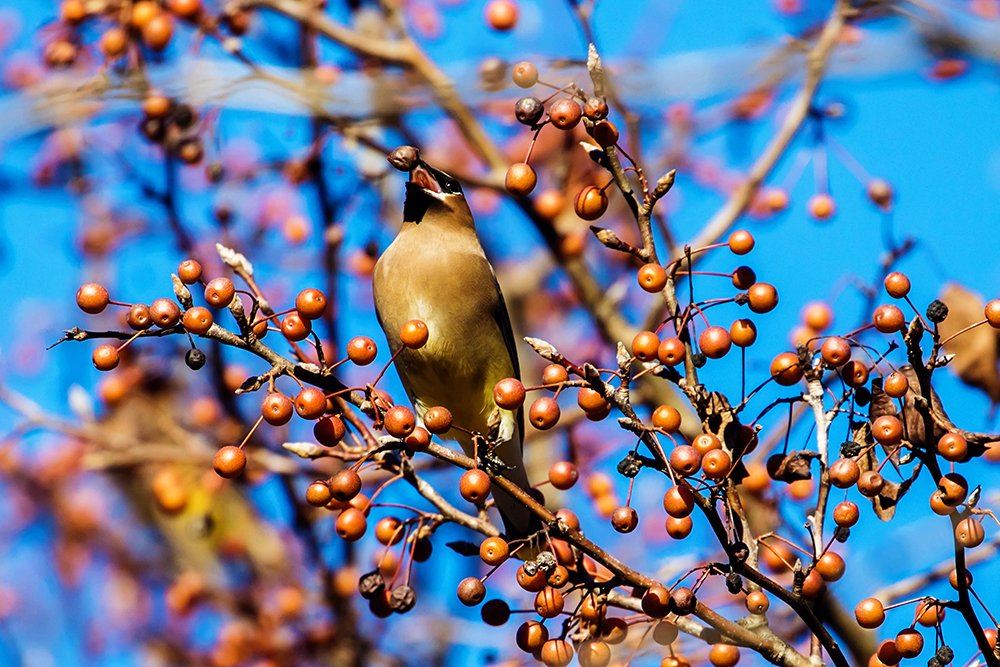
After observing the waxwings catch their fruit snacks in midair for a while, it was fun to look across the same trail and see a purple finch poke its bill into the same type of fruit and slowly consume it, getting its face all messy in the process. This bird is just looking for the seed at the center of the fruit, and it uses its large beak and tongue to tear the berry open and extract what it wants.
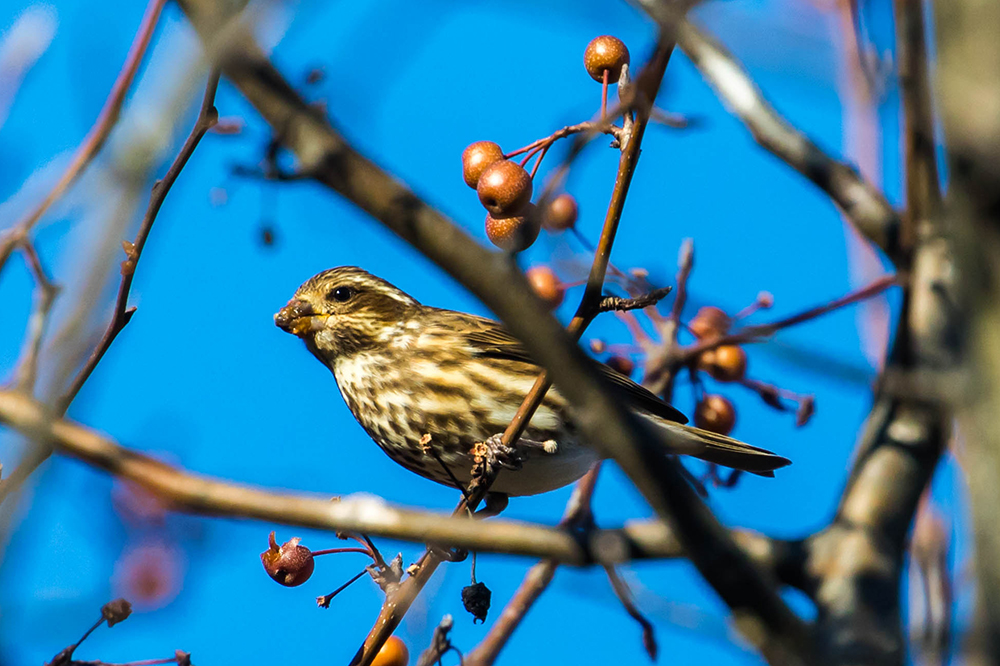
Our last two birds of prey like a pretty robust meal, so skip these if you’re squeamish about rodents or snakes!
A common sight on light poles and exposed tree branches, the American kestrel is another bird that prefers insects for many of its meals. But winter is an especially good time to spot a kestrel with a small rodent like a vole. Using their ability to see ultraviolet light, kestrels can follow a vole’s trail of urine to where the prey animal might be hiding. (I didn’t say today’s NatureZen would be appetizing to people!)
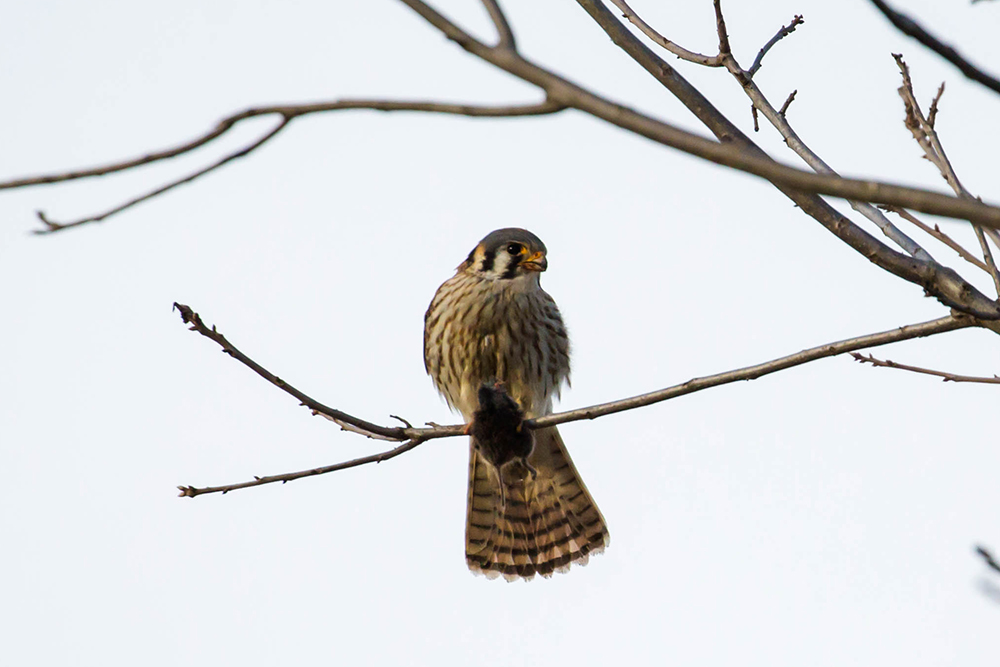
Finally, at the top of the forest food chain is the red-shouldered hawk, which hunts reptiles, amphibians, and small mammals from relatively low perches. I watched this juvenile swoop directly in front of me to grab a worm snake, which it swallowed whole (eventually). Because these birds’ digestive systems can process bones, there’s no need to take the time to pick the meat off a small reptile. They can’t digest fur and feathers, though, so mealtime can definitely get messy depending on what the forest floor is serving up that day!
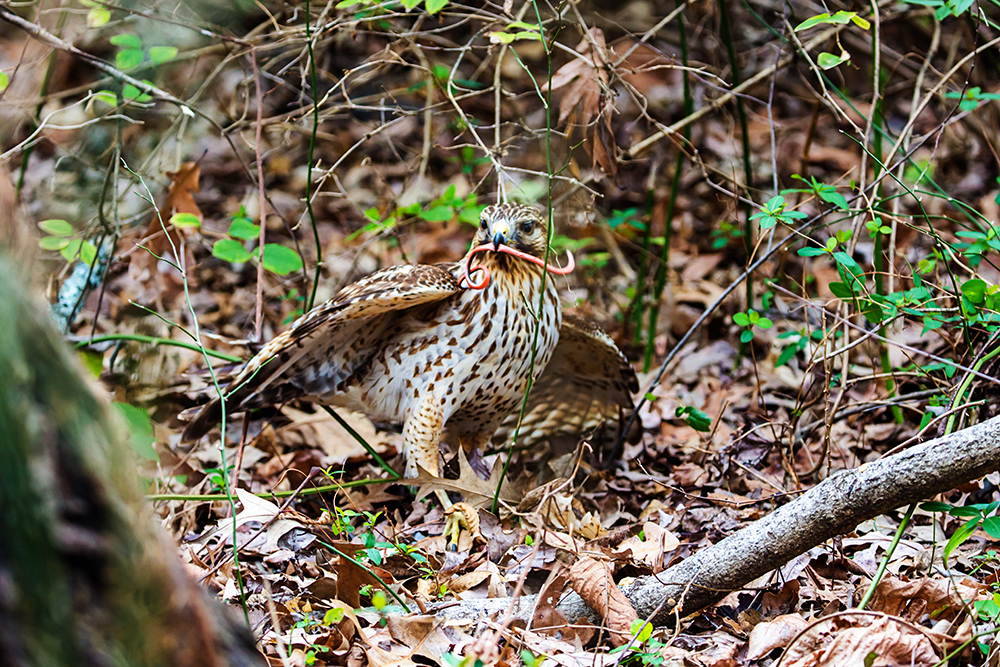
Hopefully this look into bird dining culture has whetted your appetite to go out and see what birds with snacks you can find!
(Hat tip to my friend Caitlin, who started the #birdswithsnacks hashtag on social media and inspired this topic!)



